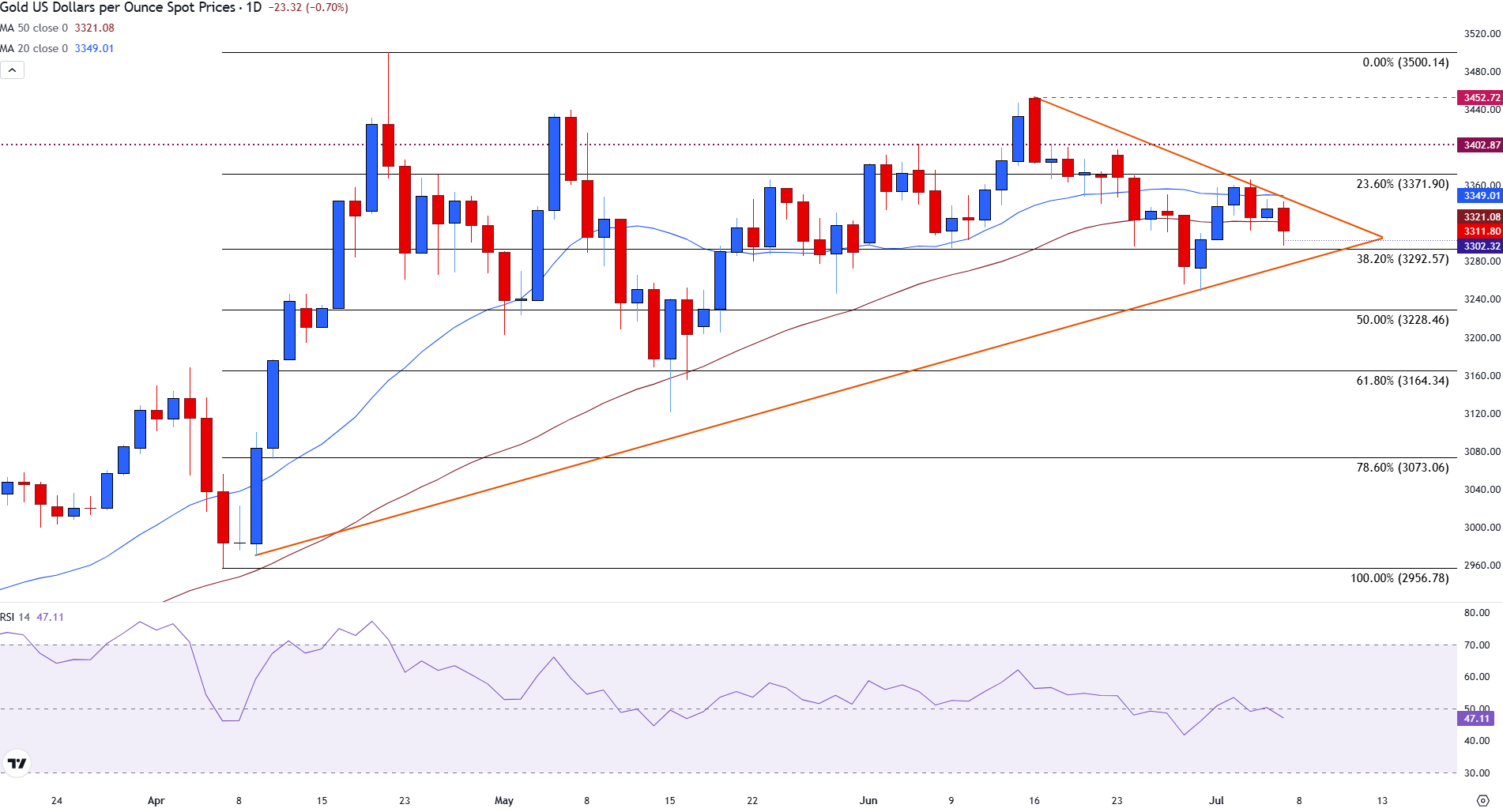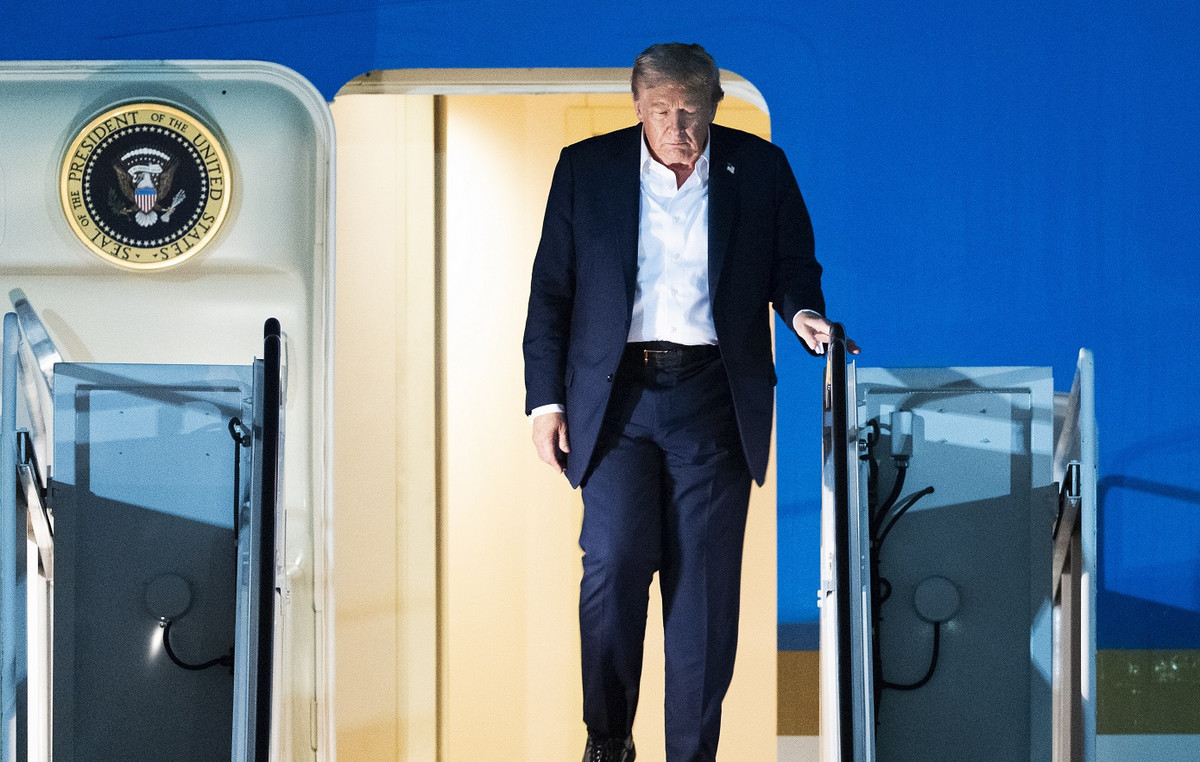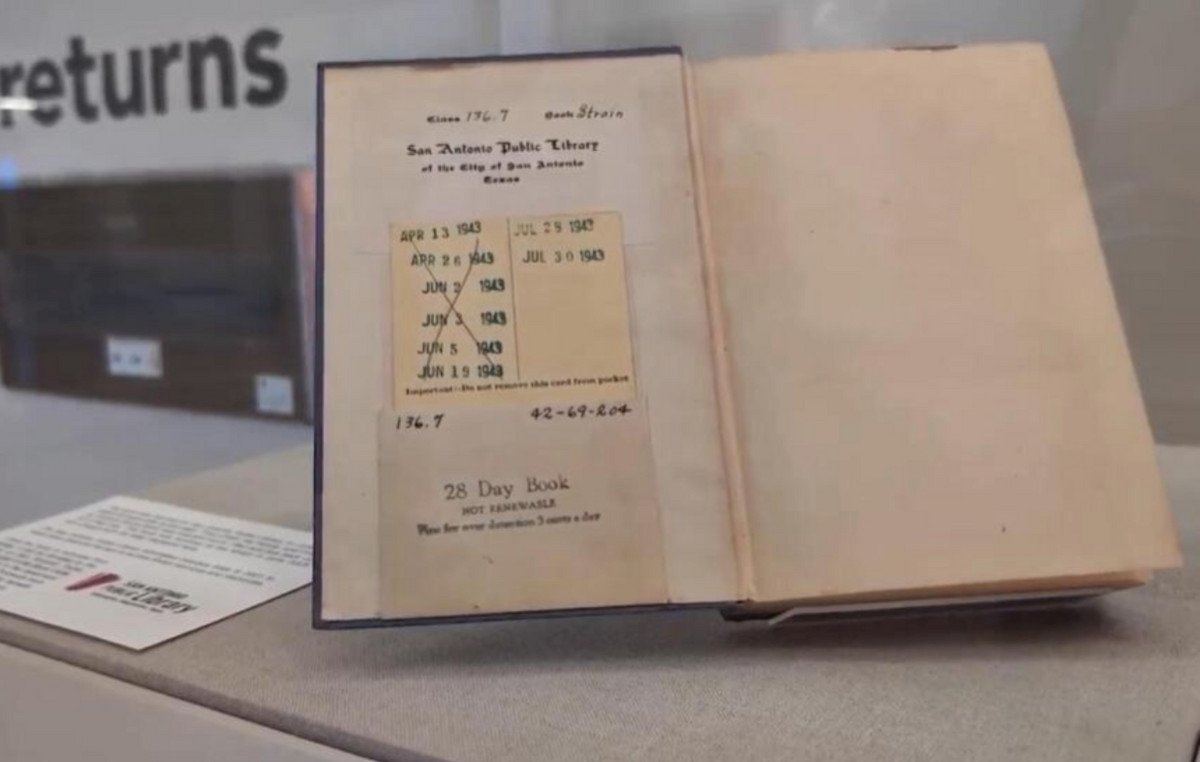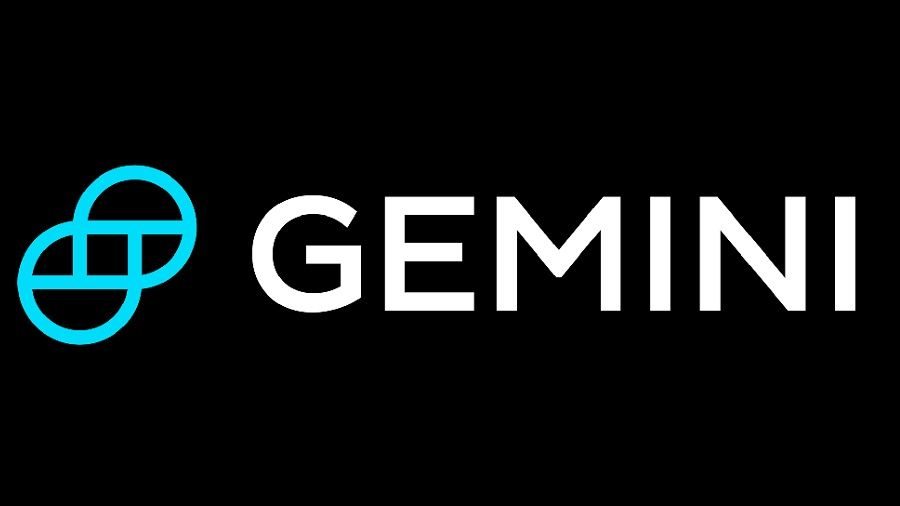- Gold is maintained above $ 3,300 while markets expect signs of the Fed and possible trade agreements.
- Trump’s tariff warnings for countries that support “BRICS anti -American policies” can offer downward protection for gold.
- XAU/USD slides towards the triangle support, approaching the $ 3,300 mark.
Gold (Xau/USD) is currently under pressure while markets expect more news about trade agreements before the deadline of tariffs on Wednesday, with prices that remain above $ 3,300 at the time of writing.
The Liquidity and trade volumes are increasing on Monday as the US returns to financial markets after Friday’s independence holiday.
The US yields have also been strengthened after the report of non -agricultural payrolls (NFP) on Thursday will reveal a resistant labor market. This reduced the prospects for the Federal Reserve (FED) to cut interest rates in July. Positive economic data have relieved the fears of an economic deceleration, raising the US dollar.
The expectations that interest rates will remain at higher levels for a longer time are not favorable for assets that do not generate performance, such as gold.
What moves the market today: gold awaits details about commercial agreements, FOMC minutes
- The reporters spoke with the US president, Donald Trump, at Morristown airport on Sunday about commercial negotiations. “I think we will have most countries ready for July 9, be it a letter or an agreement,” he said.
- It is expected that the letters describing the tariffs that will be charged to 12-15 countries be sent before noon on Monday. The remaining notifications will be sent before Wednesday. Reciprocal tariffs will begin to be applied as of August 1.
- Trump has written a publication in Truth Social stating that “any country that aligns with BRICS anti -American policies, an additional 10%tariff will be charged. There will be no exceptions to this policy.”
- The BRICS Summit in Rio de Janeiro is ongoing, and the nations of emerging markets that established the block are beginning to reduce their dependence on the United States. This initiative includes moving away from the use of the US dollar as a recipient currency, a concept known as de -dearization.
- BRICS is an acronym that represents an association of five important emerging economies: Brazil, Russia, India, China and South Africa. This group formed to improve economic cooperation and promote development in these countries. BRICS nations collaborate on various topics, including trade, investment, finance and sustainable development. They seek to increase their influence on global economic and political affairs. The block also celebrates annual summits to discuss and coordinate mutual support and growth strategies.
- The World Gold Survey in June showed that the demand for bullion has been increasing, especially with the increase in tensions between the US and China in recent years.
- The Federal Open Market Committee will publish the minutes of its June meeting on Wednesday. This report describes the reasons for keeping interest rates in the current range of 4.25% to 4.50% in June. It also provides information on the perspective of the members of the Board of Governors regarding the perspectives of the US economy. This influences the expectations about when the Fed could cut interest rates.
Technical Gold Analysis: Xau/USD is directed towards the triangle support
The current daily graphic shows that the price action is consolidating within a symmetrical triangle, suggesting that a break is likely as the range narrows. This contraction formation reflects a growing pressure, which often precedes a significant directional movement.
Recently, Xau/Usd fell below the simple mobile average (SMA) of 20 days at $ 3,348 and the 50 -day SMA at $ 3.320. The price is also approaching the Fibonacci recoil level of 38.2% in $ 3,292, a critical support area that will help determine the short -term address.
If this last failure, the downward objectives include the Fibonacci setback levels of 50% and 61.8% in $ 3,228 and $ 3,164, respectively.
Daily Gold Graph (Xau/USD)

However, if the price manages to stay above $ 3,300 and bouncing, a bull reversal could occur. In that case, the first upward objectives would be to recover the 50 -day SMA and then the 20 -day SMA. A rupture confirmed above the resistance of the triangle and the Fibonacci level of 23.6% in $ 3,371 would open the door to more profits, with a possible movement towards psychological resistance at $ 3,400.
The Relative Force Index (RSI) is currently about 47, indicating a slight bearish impulse, but with sufficient space before entering overall territory.
Tariffs – Frequently Questions
Although tariffs and taxes generate government income to finance public goods and services, they have several distinctions. Tariffs are paid in advance in the entrance port, while taxes are paid at the time of purchase. Taxes are imposed on individual taxpayers and companies, while tariffs are paid by importers.
There are two schools of thought among economists regarding the use of tariffs. While some argue that tariffs are necessary to protect national industries and address commercial imbalances, others see them as a harmful tool that could potentially increase long -term prices and bring to a harmful commercial war by promoting reciprocal tariffs.
During the election campaign for the presidential elections of November 2024, Donald Trump made it clear that he intends to use tariffs to support the US economy. In 2024, Mexico, China and Canada represented 42% of the total US imports in this period, Mexico stood out as the main exporter with 466.6 billion dollars, according to the US Census Office, therefore, Trump wants to focus on these three nations by imposing tariffs. It also plans to use the income generated through tariffs to reduce personal income taxes.
Source: Fx Street
I am Joshua Winder, a senior-level journalist and editor at World Stock Market. I specialize in covering news related to the stock market and economic trends. With more than 8 years of experience in this field, I have become an expert in financial reporting.







